The car you see in these colour images is a fully restored 1958 Toyopet Crown – a significant model in Toyota history. Not only was it Toyota’s first full-scale passenger vehicle, it was the first Japanese car to be exported to and sold in the mainland United States.
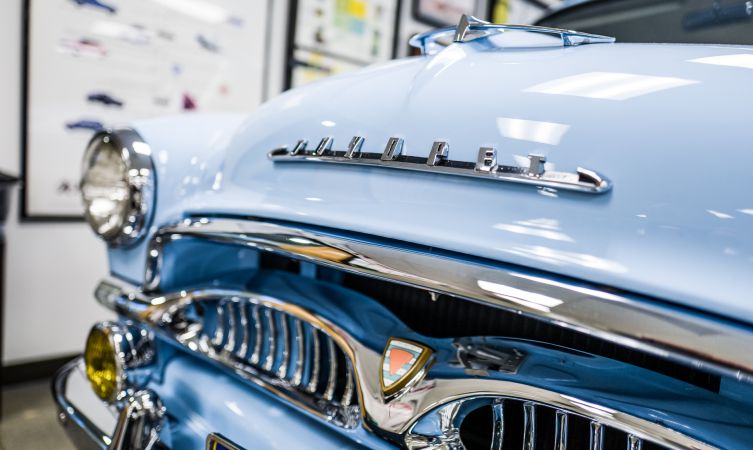
But while the model was successful in Japan, it was not so well received in America. In this post we will explain why that was the case, but also how it was instrumental in helping Toyota re-evaluate its approach to export markets.
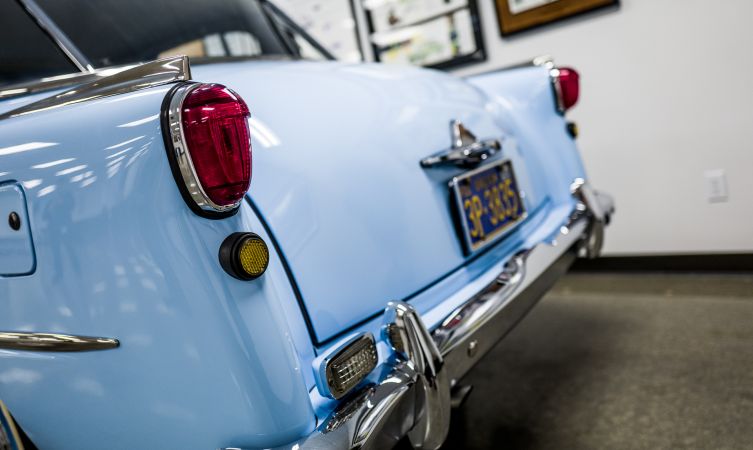
Toyota begins to think global
In the early 1950s, Toyota began to recognise the need to expand its passenger car business outside of Japan. Preliminary research of the immense US market revealed that returning members of the armed forces were moving to the suburbs and starting families, creating a specific need for smaller second cars.
By 1955, it was noted that almost 100,000 compact cars were darting between the tail-finned land yachts on US roads. Sales of these vehicles were doubling every year, and virtually all of them were European models. So the market potential – and upward sales trajectory – was clear.

Emboldened by how well the rugged Land Cruiser was being received in newly established export markets, Toyota reckoned it could create a sales success in the States with a model to take on the best-selling Volkswagen Beetle. Indeed, Toyota executives believed the very car for the job (above) had just gone on sale in Japan.
Toyopet Crown: an all-Japan success story
Work on the new Crown model – successor to the low-volume Toyopet SA, SC, SD and SF – began in 1952 and was Toyota’s first full-scale passenger vehicle. It was also unique for being developed under a programme led by engineers rather than designers.
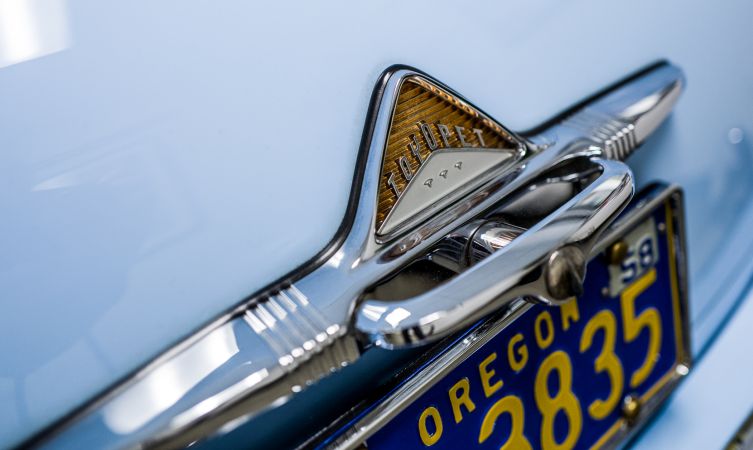
Unaware of its yet-to-be-determined future as Toyota’s world ambassador, chief engineer Kenya Nakamura developed a car tailored to meet the prevailing needs and road conditions of the domestic market.
Toyota executives initially opposed Nakamura’s proposal to apply new chassis technologies that had not yet been specifically proven on Japanese roads. Nevertheless, Nakamura persisted in his efforts and his advanced suspension system was eventually approved. It consisted of independent double wishbones and coil springs up front, paired with three semi-oval leaf springs at the rear.
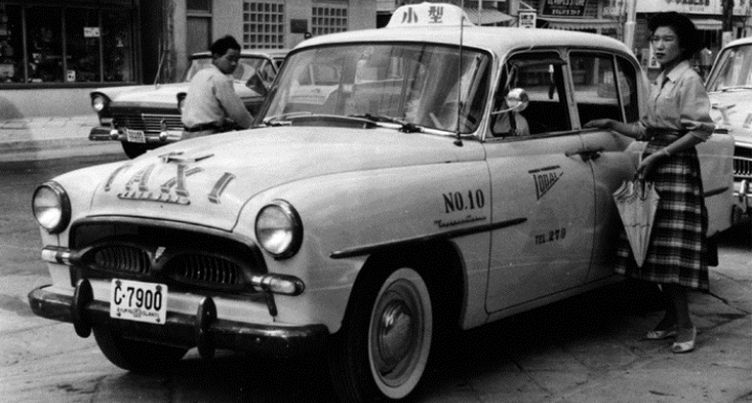
Production of the Toyopet Crown began on 1 January 1955. The model was well received on the domestic market, being praised as a complete Japanese-made car well suited to local driving environments. Two years later, its mechanical endurance was conclusively proved in motorsport.
Toyopet Crown: American dream?
In August 1957, Toyota sent three ambassadors to Los Angeles to survey the US market. They arrived ahead of the first two Crown models, which docked in California on 25 August (see below). In compliance with local law, headlights and other safety features suitable for this left-hand drive market were fitted after arrival. Two months later, on 31 October 1957, Toyota Motor Sales (TMS) was established in a former Rambler dealership in Hollywood.
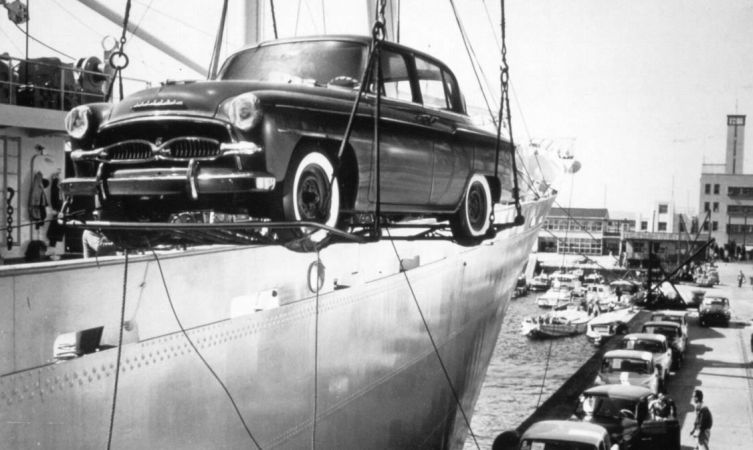
While this California city is famous for making some dreams come true, it is also known for shattering others. Indeed, the first clue that the Toyopet Crown wasn’t ideally suited to the US market came from within the company itself. Recently appointed Toyota sales administrator James McGraw wasn’t impressed, commenting: “This thing is underpowered, overpriced and it won’t sell.”
Brutal words, perhaps, but McGraw also had a point. While the Crown was purpose-built for Japan’s poor quality road network, it struggled to keep pace on America’s smooth, fast-flowing blacktop. When it eventually got to 60mph – a speed that was rare in Japan – the car apparently shuddered so much the driver couldn’t see out of the rear-view mirror.
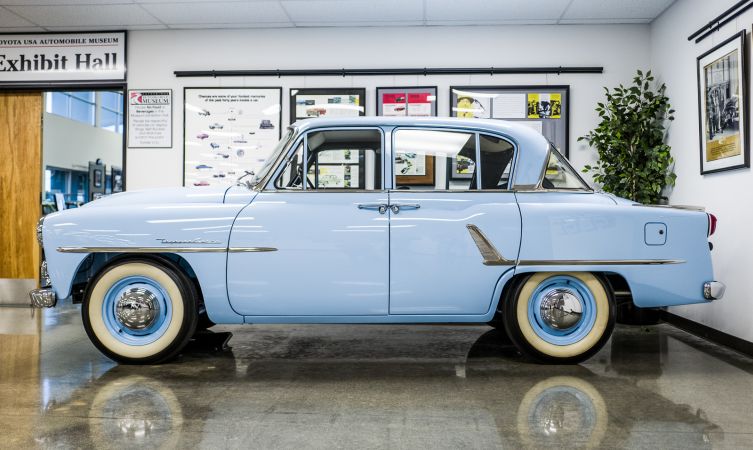
Other issues the original development team couldn’t have foreseen also came to light in the car’s first few weeks on American soil. To English-speaking ears the Toyopet brand name was divisive as it contained the nouns ‘toy’ and ‘pet’ – both of which many felt had unsuitable connotations for a serious vehicle in a discerning market.
On a more practical level, the first TMS associate, Paul Ozawa, discovered that the Crown couldn’t be taken to drive-in restaurants. Because when the serving staff hung the tray on the steering wheel it pushed the bezel and activated the horn.
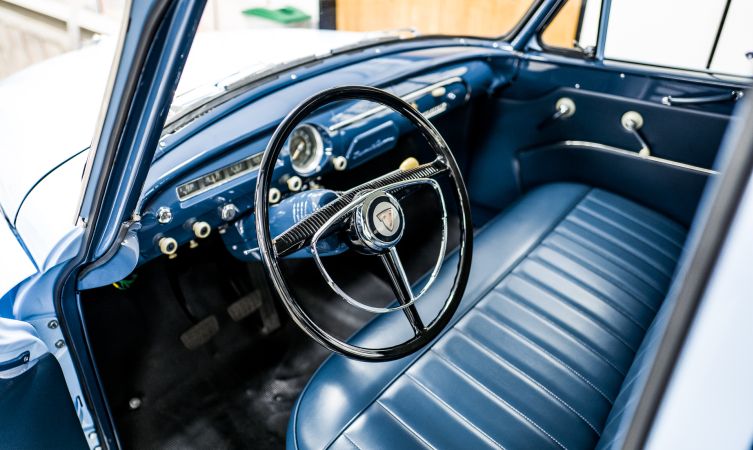
Following its receipt of a California retail license (11 December 1957) and the formation of a small distribution network (4 February 1958), TMS officially launched the Toyopet Crown through five Toyota dealerships in July 1958. The cost of the car was $1,999 – a figure that represented 67 per cent of the average American’s annual wage.
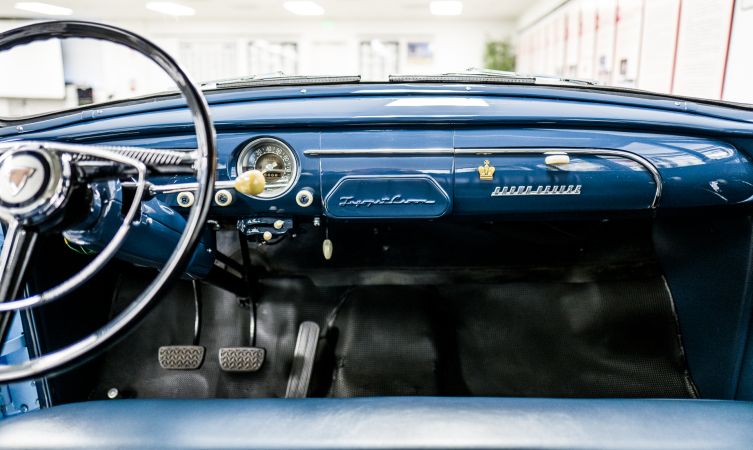
By the end of 1958 a total of 287 cars (plus a single Land Cruiser) had been sold. While sales more than tripled the following year, the decade ended on a down note. In 1960, Toyota stopped exporting the Toyopet Crown to the United States until it could develop a more suitable vehicle for this market.
Toyota returned to the US passenger car market in June 1965 with the advanced new Corona (seen below on left next to updated 1959-60 Crown Custom), which was a runaway success from the outset. Toyota had learned to adapt the product to the market and focus on the customer – qualities that it continues to this day.

Toyopet Crown: Was it good or bad?
Original US-registered Toyopet Crown models are now extremely rare and highly collectible, while its inability to keep pace with traffic or silently support a tray of food has long since been forgotten. The beautiful 1958 example in our photos has returned to the possession of its maker and now stands as a prize exhibit at the Toyota USA Automobile Museum.
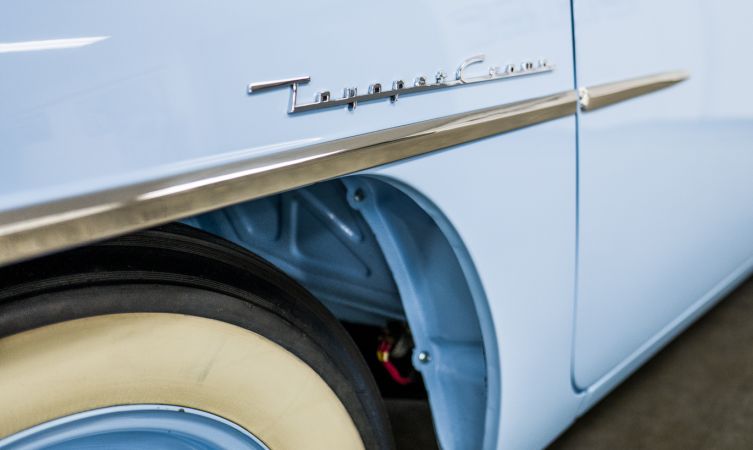
In many respects, the Toyopet Crown was an outstanding vehicle. Its well-appointed interior included luxuries such as two-speed windscreen wipers, deep-pleated vinyl upholstery and hardwearing floor covering throughout; even an electric outlet so the driver could have a shave on the move – a suggestion made in the original brochure.
Though categorised as compact from the perspective of American consumers, the Crown offered enough hip, knee and head room for six adults in their Sunday best… with hats on!
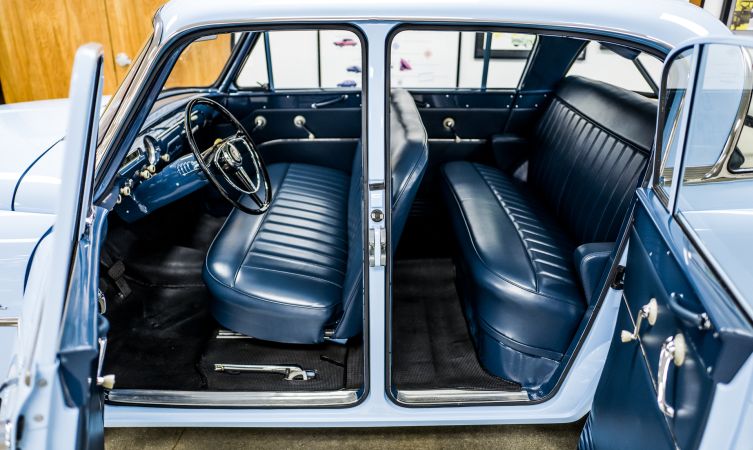
But on a more fundamental level, few other cars of its age or price point so skilfully blended traditional craftsmanship, modern automation techniques and quality control procedures.
For instance, its bodywork benefited from a nine-coat paint process, each layer being wet-sanded by hand to achieve an optimal finish. With this in mind, the fuel filler cap was made of plastic and attached to the car with a nylon cord so that it wouldn’t scratch the paintwork or get accidentally mislaid.
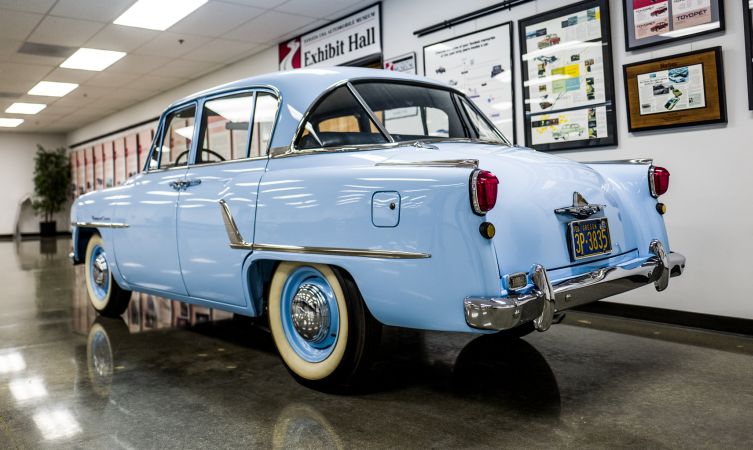
In the automobile market of the 1950s, greater weight was seen as a protection and an indicator of smoother ride comfort. So the Crown’s double-skinned body construction and rugged box frame chassis gave it a 225kg ‘advantage’ over the class average. It also sounded more solid than domestic vehicles when you closed the door.
Its 1.5-litre engine may not have been particularly powerful compared to an American V8 but it offered up to 33mpg and was specifically designed for easy maintenance. Components such as the cooling and filtration systems were also oversized for increased reliability and efficiency.
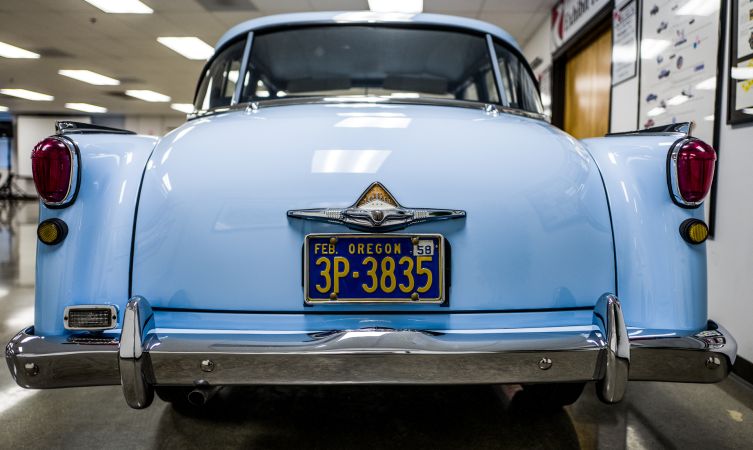
Thoughtful as these alterations might have appeared, they were not enough to secure the first-generation Crown a position in the hearts of the US car-buying public. That honour would go to later models such as the Corona, Corolla and Camry.
The second-generation Crown began production in October 1962 in Japan, and although the model did return to the US market it was finally withdrawn from sale in 1971. However, in Japan, the much-loved Toyota Crown is now in its 14th generation and has recently celebrated its 60th anniversary.
Learn more: History of the Toyota Crown
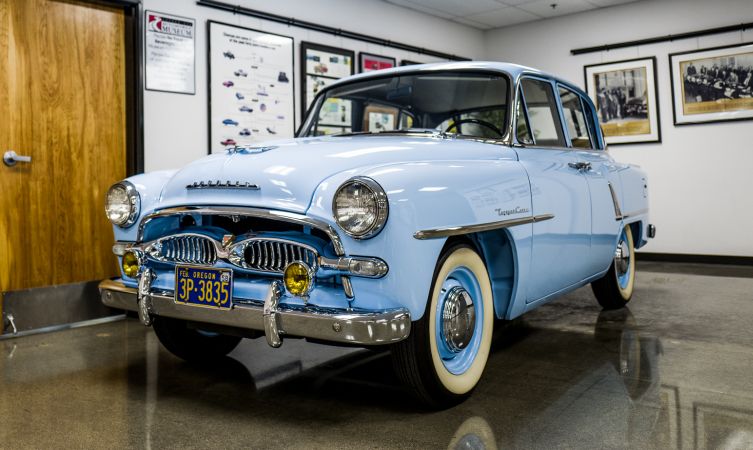



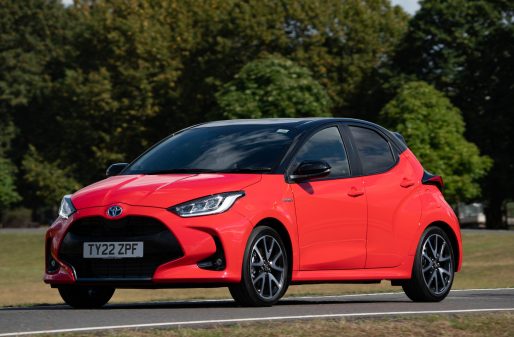
If you keep removing every post everybody ever writes, you end up with a big fat “0 comments” on the comments tag at the top of the page, leading readers to think there’s nobody on here, thus implying the articles are not interesting.
But the articles are very interesting. The writing, research, and presentation are all top notch, way better than sites for other OEMs, honestly!
You should allow comments, even ones you don’t like but are written respectfully, or you should remove the btl comment area completely.
Hi there,
We only remove posts if they contain offensive language, external links, email addresses or offensive information. Are you referring to a comment in particular?
OH Noooooo…
The first one that makes it in, and I’m complaining. Best for me to repeat this part: “The writing, research, and presentation are top-notch, way better than other…”
In my other posts I was only disrespectful to car shapes and turbo-housing rule bending, honest!
Hi there,
We would not have removed a comment which is expressing feedback regarding a vehicle as long as it does not contain any offensive language. We apologise if your comment has been removed, one of our blog moderators may have seen it and thought it defied our blog rules. We’d welcome any feedback you’d wish to post, further on from this conversation. Many thanks.
Cheers from the States! Great article. Keep them coming! 🙂
I always wanted a first gen crown because of the suicide doors, the uniqueness of having a Toyota from the fifties, and my dad works at Toyota. Until I found out they were so rare, I opted for mid century American compacts and thus my ’63 Falcon came (dime a dozen). Such a shame there aren’t many out there anymore. Learned a lot from this article!
Hi Timothy,
Thank you for your comment and your kind words. If you’re interested in reading more about the History of the Toyota Crown, here is a link to our blog post: https://mag.toyota.co.uk/history-of-the-toyota-crown. Many thanks.
My uncle in Santa Fe Springs had a Toyopet Crown which I received in 1965. I always understood it was a 1962 model, but maybe that was wrong. One feature that was cool, besides the electric shaver plug, was that the car included a crank and could be crank started! My friends and I thought that was great fun! And the vibrations at 60 mph were cured by engaging the automatic overdrive – take your foot off the accelerator for about two to three seconds, the mash back down and it went into overdrive, which was very smooth….
Hi James,
Its great to hear you have such fond memories of our Toyopet Crown. Do you still have the car?
Thanks.
Great article.I am very very impressed from this blog because this one of the great post and thanks for sharing the information..Nice collection of good crowns blogs. Thanks for sharing.
crowns Waukesha WI
Hi Natalie,
It’s great to hear that you enjoyed the blog post!
Very interesting read for me. My Grandfather started selling Toyota’s in 1959 in Schnecksville PA. Thank you!
Thank you, Mary. That’s great to hear!
I was given one of these cars in the late sixties. It ran well, and was roomy as well. The problem was that repair parts had become impossible to find, at least in my part of California (San Bernardino). I needed brake parts and a new gasket for the differential. After mostly puzzle look from auto parts suppliers who had never heard of a Toyopet, I gave up the search and returned the car. now that I learn they are rare and valuable, I wish I had kept it. I really enjoyed the little driving I did in it.
Grant Gildroy
What a thrill to see a mirror image (including the powder blue color) of the 1958 Toyota Toyopet that my Dad bought for me in 1966 for $350, at Hill Probert Motors in Larkspur, California. I loved that little car.It was built like a tank! Terrific fit and finish! Even the Naugahyde upholstery looked and felt like leather. The handling was very good on the curvy roads. Top speed was only 60 MPH, until I salvaged some larger diameter wheels with the same lug-nut pattern. This resulted in a slightly raked (cool!) profile, and a new top speed of about 68mph (just right). I drove it too hard, too fast, and for too long; it ran low on oil (my fault, I was only 16) and the engine seized up. I sold it to motivated buyer, in that condition for $350. That little Toyopet will always have a special place in my heart.
The original Crown didn’t discover the achievement later Toyotas did in America. Regardless of the vehicle’s heavy development, the pet-like name wasn’t extraordinary for deals: somewhere in the range of 1958 and 1963 just 2,240 Crowns figured out how to be sold, and the last year’s business comprised of only several vehicles. As by late 1960 Toyota had endured a shot of 1.42 million dollars because of the Crown not discovering purchasers, the organization concentrated on offering enough Land Cruisers to compensate for the mistake and to support a re-built, greater car it could capability sell in the States. The “Toyopet” name was likewise dropped when the people to come, S40 arrangement Crown appeared.
1958 Toyopet CrownBut back to the vehicle included here: the 1958 Crown was the first of all, and its first proprietor was the Department General of Japan in San Francisco, Akira Nishiyama. Between taking conveyance in October 1958 and passing it on in 1965, the department just timed 28,698 miles on the Crown. The new attendant, a carport proprietor named Tanaka continued to store the vehicle for four decades. The story goes the 1.45-liter, 60-pull vehicle wasn’t extraordinary on California’s uneven streets and continued overheating. Tanaka is probably going to have taken the vehicle in to be fixed and the circumstance transformed into long haul stockpiling. At the point when the Crown was extricated from its resting place, it despite everything had the Department General’s cigarettes in the back seat’s debris plate click here for more information.
As Japanese Nostalgic Vehicle composes, the Crown was put on eBay in 2008 and it found another home in Tupelo, Mississippi, at the Tupelo Car Exhibition hall. There’s been a Toyota plant in the city since 2007, and the Crown’s buy followed the opening of the plant. In this way, the Crown was additionally reestablished and painted to coordinate the example found in the vehicle’s trunk. You can see photographs of the Crown in its present condition on the historical center’s site.
Tragically, the exhibition hall is presently shutting, and that implies this Tupelo Nectar needs to go, alongside its 176 showcase mates possessed by the historical center. The vehicles will be sold in late April through Bonhams, and it will be fascinating to perceive how much the Crown orders. We trust it finds a decent home.